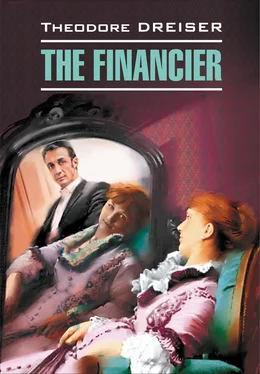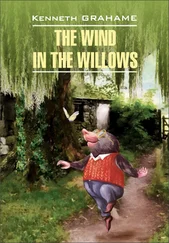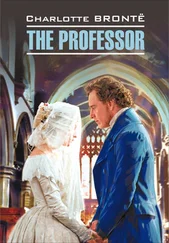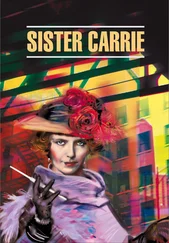And when the houses were finished, they were effective and arresting – quite different from the conventional residences of the street. They were separated by a space of twenty feet, laid out as greensward. The architect had borrowed somewhat from the Tudor school, yet not so elaborated as later became the style in many of the residences in Philadelphia and elsewhere. The most striking features were rather deep-recessed doorways under wide, low, slightly floriated arches, and three projecting windows of rich form, one on the second floor of Frank’s house, two on the facade of his father’s. There were six gables showing on the front of the two houses, two on Frank’s and four on his father’s. In the front of each house on the ground floor was a recessed window unconnected with the recessed doorways, formed by setting the inner external wall back from the outer face of the building. This window looked out through an arched opening to the street, and was protected by a dwarf parapet or balustrade. It was possible to set potted vines and flowers there, which was later done, giving a pleasant sense of greenery from the street, and to place a few chairs there, which were reached via heavily barred French casements.
On the ground floor of each house was placed a conservatory of flowers, facing each other, and in the yard, which was jointly used, a pool of white marble eight feet in diameter, with a marble Cupid upon which jets of water played. The yard which was enclosed by a high but pierced wall of green-gray brick, especially burnt for the purpose the same color as the granite of the house, and surmounted by a white marble coping which was sown to grass and had a lovely, smooth, velvety appearance. The two houses, as originally planned, were connected by a low, green-columned pergola which could be enclosed in glass in winter.
The rooms, which were now slowly being decorated and furnished in period styles were very significant in that they enlarged and strengthened Frank Cowperwood’s idea of the world of art in general. It was an enlightening and agreeable experience – one which made for artistic and intellectual growth – to hear Ellsworth explain at length the styles and types of architecture and furniture, the nature of woods and ornaments employed, the qualities and peculiarities of hangings, draperies, furniture panels, and door coverings. Ellsworth was a student of decoration as well as of architecture, and interested in the artistic taste of the American people, which he fancied would some day have a splendid outcome. He was wearied to death of the prevalent Romanesque composite combinations of country and suburban villa. The time was ripe for something new. He scarcely knew what it would be; but this that he had designed for Cowperwood and his father was at least different, as he said, while at the same time being reserved, simple, and pleasing.
It was in marked contrast to the rest of the architecture of the street. Cowperwood’s dining-room, reception-room, conservatory, and butler’s pantry he had put on the first floor, together with the general entry-hall, staircase, and coat-room under the stairs. For the second floor he had reserved the library, general living-room, parlor, and a small office for Cowperwood, together with a boudoir for Lillian, connected with a dressing-room and bath.
On the third floor, neatly divided and accommodated with baths and dressing-rooms, were the nursery, the servants’ quarters, and several guest-chambers. <���…>
It was now that he (Cowperwood) began to take a keen interest in objects of art, pictures, bronzes, little carvings and figurines, for his cabinets, pedestals, tables, and étagères. Philadelphia did not offer much that was distinguished in this realm – certainly not in the open market.
There were many private houses which were enriched by travel; but his connection with the best families was as yet small. There were then two famous American sculptors, Powers and Hosmer, of whose work he had examples; but Ellsworth told him that they were not the last word in sculpture and that he should look into the merits of the ancients. He finally secured a head of David, by Thorvaldsen [105] Thorvaldsen – Альберт Бертель Торвальдсен (1770–1844), датский скульптор, творил в неоклассическом стиле
, which delighted him, and some landscapes by Hunt, Sully, and Hart [106] Hunt – Уильям Генри Хант (1790–1864), английский акварелист, Sully – Томас Салли (1783–1872), американский художник английского происхождения, Hart – Уильям Харт (1823–1894) либо его брат Джеймс МакДугал Харт (1828–1901), американские художники шотландского происхождения
, which seemed somewhat in the spirit of his new world.
The effect of a house of this character on its owner is unmistakable. We think we are individual, separate, above houses and material objects generally; but there is a subtle connection which makes them reflect us quite as much as we reflect them. They lend dignity, subtlety, force, each to the other, and what beauty, or lack of it, there is, is shot back and forth from one to the other as a shuttle in a loom, weaving, weaving. Cut the thread, separate a man from that which is rightfully his own, characteristic of him, and you have a peculiar figure, half success, half failure, much as a spider without its web, which will never be its whole self again until all its dignities and emoluments are restored.
The sight of his new house going up made Cowperwood feel of more weight in the world, and the possession of his suddenly achieved connection with the city treasurer was as though a wide door had been thrown open to the Elysian fields of opportunity. He rode about the city those days behind a team of spirited bays, whose glossy hides and metaled harness bespoke the watchful care of hostler and coachman. Ellsworth was building an attractive stable in the little side street back of the houses, for the joint use of both families. He told Mrs. Cowperwood that he intended to buy her a victoria – as the low, open, four-wheeled coach was then known – as soon as they were well settled in their new home, and that they were to go out more. There was some talk about the value of entertaining – that he would have to reach out socially for certain individuals who were not now known to him. Together with Anna, his sister, and his two brothers, Joseph and Edward, they could use the two houses jointly. There was no reason why Anna should not make a splendid match. Joe and Ed might marry well, since they were not destined to set the world on fire in commerce. At least it would not hurt them to try.
“Don’t you think you will like that?” he asked his wife, referring to his plans for entertaining.
She smiled wanly. “I suppose so,” she said.
It was not long after the arrangement between Treasurer Stener and Cowperwood had been made that the machinery for the carrying out of that political-financial relationship was put in motion. The sum of two hundred and ten thousand dollars in six per cent. interest-bearing certificates, payable in ten years, was set over to the credit of Cowperwood & Co. on the books of the city, subject to his order. Then, with proper listing, he began to offer it in small amounts at more than ninety, at the same time creating the impression that it was going to be a prosperous investment. The certificates gradually rose and were unloaded in rising amounts until one hundred was reached, when all the two hundred thousand dollars’ worth – two thousand certificates in all – was fed out in small lots. Stener was satisfied. Two hundred shares had been carried for him and sold at one hundred, which netted him two thousand dollars. It was illegitimate gain, unethical; but his conscience was not very much troubled by that. He had none, truly. He saw visions of a halcyon future.
Читать дальше












